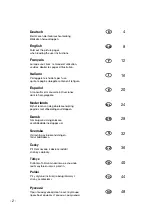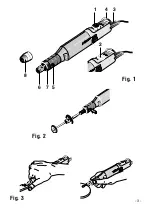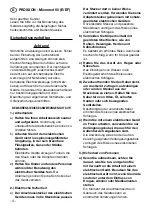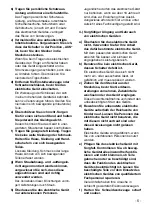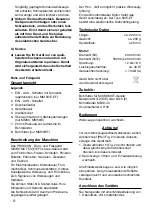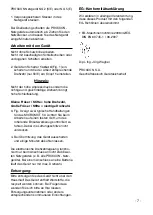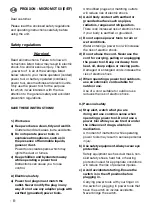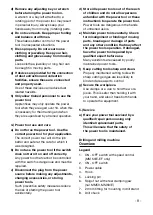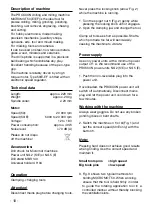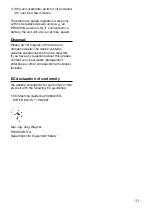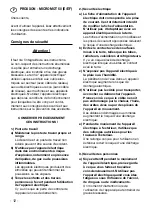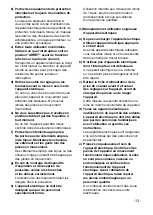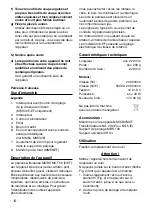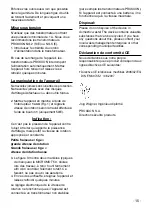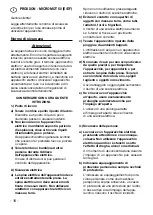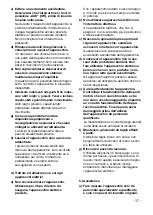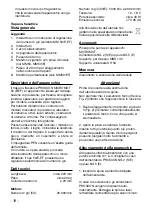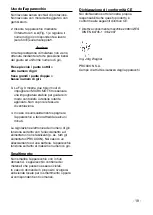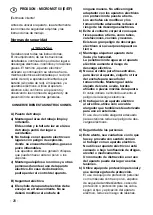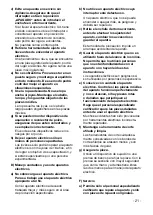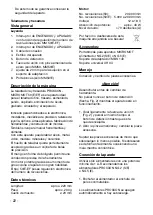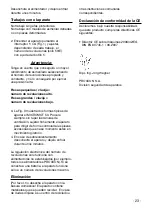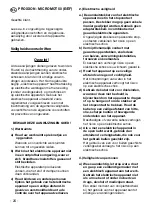
- 9 -
d) Remove any adjusting key or wrench
before turning the power tool on.
A wrench or a key left attached to a
rotating part of the power tool may result
in personal injury. Always keep your
hands away from moving (rotating) parts.
e) Do not overreach. Keep proper footing
and balance at all times.
This enables better control of the power
tool in unexpected situations.
f) Dress properly. Do not wear loose
clothing or jewellery. Keep your hair,
clothing and gloves away from moving
parts.
Loose clothes, jewellery or long hair can
be caught in moving parts.
g) If devices are provided for the connection
of dust extraction and collection
facilities, ensure these are connected
and properly used.
Use of these devices can reduce dust
related hazards.
h) Only allow trained personnel to use the
power tool.
Apprentices may only operate the power
tool when they are aged over 16, when this
is necessary for their training and when
they are supervised by a trained operative.
4.) Power tool use and care
a) Do not force the power tool. Use the
correct power tool for your application.
The correct power tool will do the job
better and safer at the rate for which it
was designed.
b) Do not use the power tool if the switch
does not turn it on and off correctly.
Any power tool that cannot be controlled
with the switch is dangerous and must be
repaired.
c) Disconnect the plug from the power
source before making any adjustments,
changing accessories, or storing
power tools.
Such preventive safety measures reduce
the risk of starting the power tool
accidentally.
d) Store idle power tools out of the reach
of children and do not allow persons
unfamiliar with the power tool or these
instructions to operate the power tool.
Power tools are dangerous in the hands
of untrained users.
e) Maintain power tools carefully. Check
for misalignment or binding of moving
parts, breakage or damage of parts
and any other condition that may affect
the power tools operation. If damaged,
have the power tool repaired by a
qualified expert before use.
Many accidents are caused by poorly
maintained power tools.
f) Keep cutting tools sharp and clean.
Properly maintained cutting tools with
sharp cutting edges are less likely to
bind and are easier to control.
g) Secure the workpiece.
Use clamps or a vice to hold the work -
piece. This is safer than holding it with
your hand, and also it frees both hands
to operate the equipment.
5.) Service
a) Have your power tool serviced by a
qualified repair person using only
identical replacement parts.
This will ensure that the safety of
the power tool is maintained.
Drilling and milling machine
Overview
Legend
1. ON - OFF switch with speed control
(MM 50/E-EF only)
2. ON - OFF switch
3. Power
cable
4. Hook
5.
Locking pin
6. Spigot nut with steel clamping jaw
(nur MM50, MM50/E)
7. 20 mm fitting for mounting in drill stand
8.
Drill chuck


